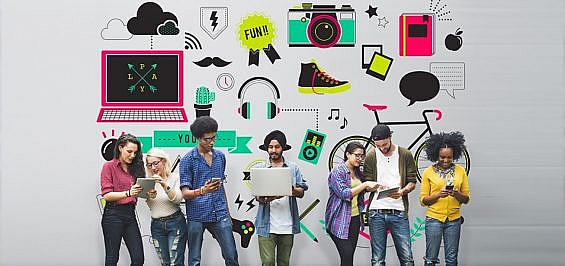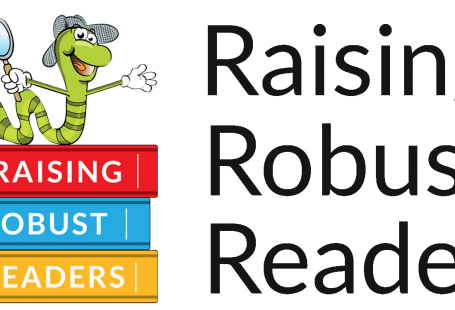In the broadest sense, the field of instructional design and technology (IDT) was once labeled as educational technology and technology-enhanced learning by a wide range of field experts. This term, however, is known as the integration of media for instructional goals. The internet, for example, is used to redesign instruction and enhance learning and teaching. Some scholars, including Reiser (2007), by contrast, emphasized that the scope of the field cannot be explained by the term educational technology. The IDT, rather, was preferred to describe the field as it suggests solutions to instructional problems through a systematic design process. The performance of individuals is hence expected to improve. The design process could be better handled by means of models with iterative steps such as Kirkpatrick, Dick, and Carey or ADDIE.
Trends in Technology Enhanced Learning
Having clarified the term and the definition of the field, I can highlight the underpinning trends which have been remarkably influenced the field. Performance improvement, first of all, is referred to as the trend that has gained increasing interest recently. It means assisting individuals to perform the tasks effectively. This could also be considered as the ultimate goal of the field. The interventions of the instructional designers aim to improve the ongoing process in workplace settings. It also aims to provide an environment in which individuals can better show their skills.
Performance support, secondly, is shown as a trending topic in the field, especially after the works by Gery (1991). It offers systems to individuals in order to help better performance. SPSS software, for example, is used to analyze the findings of the quantitative studies. This trend, I believe, is no more gaining enough interest, although it is still utilized by the vast majority of people. Artificial intelligence (AI), as a trend in the field, is substituted for performance support since it offers more sophisticated solutions to the area and significant effect in facilitating the learning and teaching process. AI is also commonly seen in life, such as the small home devices as it gets more affordable. The use of AI in the educational process, thus, is getting more attention.
Social media, on the other hand, has seen exponential growth in life. It was also used for instructional purposes (Greenhow & Lewin, 2016. It provides new way of interacting and learning in society. This trend, in my opinion, is losing popularity, although blogs or wikis are commonly used in education. There exists such a high level distraction in social media that I do not think individuals could pay enough attention to learning in a social media environment. Additionally, most social media platforms are not originally created for educational considerations.
As for the educational games as a trend in the field, it could be said that unlike social media, there are many games which were created and designed for the purpose of improving learner performance and motivation. The term serious gaming is also used to describe this kind of games such as aviation simulators (Young et al., 2012). They both include game characteristics and subject-driven components. Gamification, I think, is not something that might transform the learning process due to the lack of enough game mechanics and content knowledge. Educational games or serious gaming, by contrast, offer great opportunities to lower down the cognitive load, improve retention, and enhance learning outcomes (Habgood & Ainsworth, 2011). X-Plane 11, for example, is a simulator game and could be used with virtual reality headsets. The integration of such games enhances learning with authentic and real lifelike materials. Teachers can create an enriched learning environment by means of such games.
Mobile learning proposes learning with mobile devices, including tablets, smartphones, etc. The premise that learning could be supported with these devices has been a hot topic in the field. My belief is that, unlike computers, these small devices are not suitable to enhance learning. First of all, a tablet is limited to practices with clickers or video plays. Challenges are listed as screen size, key size, battery life, and limited memory (Mehdipour & Zerehkafi, 2013). Smartphones are also forbidden in most schools due to distractive issues or privacy matters in the classroom. Some studies might promote the advantages of smartphones in education. They, however, are not seen in the field commonly. The perception of phones by instructors and school administration has always been a troublemaker for them. It is arduous work to change this perception. Furthermore, most educational software does not enable phone applications.
Online learning is the backbone of the field as it employs the full potential of technology to transform learning and teaching. Online learning has been dramatically expanding over the last two decades (Martin et al., 2020). Almost %70 of universities in the US underline the significance of online learning and say that they investigate ways to integrate it into formal education (Allen and Seaman, 2013). In 2013, 5.5 million students were known to take at least one online course at a university (U.S. Department of Education, 2016). Following the COVID-19 pandemic, there has been exponential growth again in enrollment, and online learning has been an inseparable part of human beings. However, the literature on online courses during the pandemic clearly shows that students and teachers were caught off-guard. They had to go into somewhere they had never been.
The pedagogical considerations, therefore, gained importance. Online learning does not mean replacing only the learning environment. It has its own principles and strategies which should be used to motivate learning and decrease the drop rate. The transactional distance (TD) theory is referred to as the partly physical but mostly cognitive, psychological, and affective distance between learner, instructor and provides a great framework for online learning (Moore, 2013). TD proposes that dialogic interactions between instructors and students should be increased, more capacity should be given to students for individualization, and the rigidity of the structure should be minimized. In this way, quality online learning is possible in the long run.
Serious thoughts, thus, should be given to this issue by instructors and instructional designers. My belief is that most courses will be delivered online in the future on the condition that enough attention is paid to pedagogy. It brings many benefits to education, such as flexibility, time-saving, a wider audience, self-paced learning, and reduced costs. Instructional designers are playing and will continue playing a crucial role in the success of online education.
Another trend is the Massive Open Online Courses (MOOCs) that provide free online courses by a wide range of institutions and educators. Coursera originated at Standford University, for example, works with more than 100 universities and includes hundreds of courses. The use of MOOCs is growing steadily around the world in that edX platform, originated at Harvard University has reached 35 million users and 15 thousand instructors. I don’t think it has accomplished its potential since it was shown as the future of education at the beginning (Siemens, 2015). Low retention with drop rate, which was found almost 90 percent (Eriksson & Adawi, 2017), however, is a big obstacle in this goal.
My belief is that most MOOCs lack of motivational design to keep individuals in the system and prevent volition. If MOOCs are aiming to be part of everyday life and an inseparable part of formal and informal education, further investigation is needed to redesign the courses with motivational aspects. They, otherwise, might no longer exist in providing quality education. Another obstacle is short of interaction during the course. As a first-person user, I have seen that interaction or collaboration is not compulsory in order to complete the courses. In this regard, it is normal for several institutions to admit the certificate as a substitution for university courses.
Learning analytics, last but not least, is a trend in the field. It is usually referred to as big data indicating a mass of data regarding learners in understanding learning. It is an undeniable fact that data-driven approaches or strategies will lead better learning environment (Montebello, 2018). All the stakeholders in education must make evidence-informed decisions as a result of verified data. The datasets come from a wide range of sources, including teacher observations, student information software, school records, learning management systems, etc.
Myla, for example, is a system that originated at the University of Michigan. It provides information about students’ engagement, assignments, scores, and grades. The activities of learners are stored in the data platform and used to produce sound strategies to bring innovation and improve performance. However, there are raising concerns on ethical issues such as transparency, accessibility, and reliability of data. The datasets reflect the characteristics of a person or an institution. That is why it is significant to make clear the reasons to use data.
Although many trends were emphasized in the literature, every person has his own perspective for the future trend of the field. My personal understanding is that despite leaps in other aspects, microcredentialing is swiftly getting mainstream for higher education. According to the description of the University of New York, microcredentials are considered as “programs that verify, validate, and attest that specific skills and/or competencies have been achieved.” Unlike conventional certificates, microcredentials are designed for more flexible and narrowly focused. The recent report of the credential engine in the US identifies more than 900.000 different credentials in various categories. Google, for example, announced that Career Certificates are on offer in subjects such as data analysis and data management. This movement will force institutions to revise their curriculums and information delivery methods.
Overall, anything that affects human performance is a potential interest of instructional design and technology. There have been rising trends for decades, and thus they received great attention from scholars and field experts. Considering the current rate of innovation and investment in technology, new trends will be seen in the field for the near future in that they will force stakeholders to be considered to better serve human beings. The trends will lead to diversity, equity, and inclusion with excellence for everyone.
References
Credential Engine, Counting U.S. Postsecondary and Secondary Credentials February 2021, retrieved from https://credentialengine.org/counting-credentials-2021/
Eriksson, T., Adawi, T., & Stöhr, C. (2017). “Time is the bottleneck”: a qualitative study exploring why learners drop out of MOOCs. Journal of Computing in Higher Education, 29(1), 133-146.
Greenhow, C., & Lewin, C. (2016). Social media and education: Reconceptualizing the boundaries of formal and informal learning. Learning, media and technology, 41(1), 6-30.
Habgood, M. J., & Ainsworth, S. E. (2011). Motivating children to learn effectively: Exploring the value of intrinsic integration in educational games. The Journal of the Learning Sciences, 20(2), 169-206.
Lai, F. Q., & Lehman, J. D. (Eds.). (2016). Learning and Knowledge Analytics in Open Education: Selected Readings from the AECT-LKAOE 2015 Summer International Research Symposium. Springer.
Martin, F., Sun, T., & Westine, C. D. (2020). A systematic review of research on online teaching and learning from 2009 to 2018. Computers & education, 159, 104009.
Mehdipour, Y., & Zerehkafi, H. (2013). Mobile learning for education: Benefits and challenges. International Journal of Computational Engineering Research, 3(6), 93-101.
Montebello, M. (2018, October). Assisting education through real-time learner analytics. In 2018 IEEE Frontiers in Education Conference (FIE) (pp. 1-7). IEEE.
Moore, M. G. (2013). Th e th eory of transactional distance. In Handbook of distance education (pp. 84-103).
Reiser, R. A. (2007). What field did you say you were in. Trends and issues in instructional design and technology, 2-9.
Siemens, G. (2015). The role of MOOCs in the future of education. MOOCs and open education around the world.
U.S. Department of Education, National Center for Education Statistics. (2016). Digest of education statistics, 2014 (NCES 2016-006), Table 311.15. Retrieved from https://nces.ed.gov/fastfacts/display.asp?id=80.
Young, M. F., Slota, S., Cutter, A. B., Jalette, G., Mullin, G., Lai, B., … & Yukhymenko, M. (2012). Our princess is in another castle: A review of trends in serious gaming for education. Review of educational research, 82(1), 61-89.
Please feel free to contact me if you need any further information.





